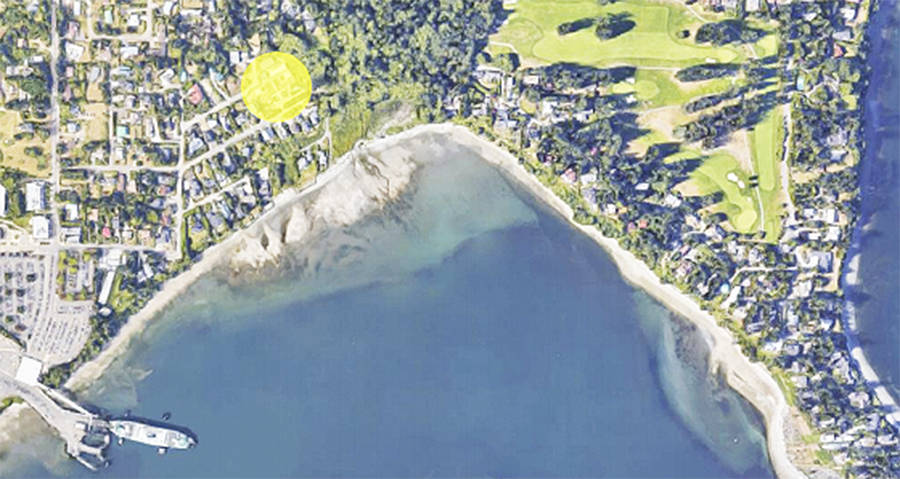The Bainbridge Island City Council looked at its wastewater treatment plant and hotel-motel tax last week.
The council expressed concerns about the wastewater treatment plant after a spill in January, but a study actually shows that it’s “high performing.”
The main issue with that spill is the plant experienced consecutive days of wet weather, which stresses the system, the Wastewater Treatment Plant study says.
The executive summary says a sampling of industrial-commercial dischargers shows pretreatment is not required at this time. That is fortunate as it continues to say that would be cost prohibitive with construction estimates from $1.4 million to $9 million, along with increased operation and maintenance costs.
It’s not all good news, however. The report says the facility is reaching capacity and new nutrient reduction regulations start up late this year. The report recommends: spending $100,000 on a plan to maximize settleability; within two years re-rate the plant and confirm long-term treatment improvement state requirements for $400,000; and within four years increase treatment improvements, plant capacity and nutrient reduction at a cost of $1 million to $2 million.
Public Works and Engineering director Chris Wierzbicki said the last major upgrade at the plant was $10 million in 2007. He explained the plant separates sludge that is trucked away and liquids, which go through an outfall east to Puget Sound, rather than south to the harbor.
The plant is located in a residential neighborhood, near Gov. Jay Inslee’s home, so there is little room to expand its footprint. But he said adding capacity would not necessarily require more space. It could just mean improvements in how wastewater is processed. But it’s a very effective system already, winning awards from the Department of Ecology three-straight years.
He said Contaminants of Emergency Concerns, or EMC’s, could be treated with granular activated carbon at a cost of $1.5 million to $2 million. To reuse effluent with an improved disinfection system would cost from $5 million to $10 million.
Wierzbicki said the study shows restaurants, including wineries and breweries, are not really hurting capacity as was thought, so treating their wastewater before it gets to the plant is not really needed. Despite that, some on the council expressed interest in a fats, oil, grease, or FOG, ordinance. Wierzbicki said that could be possible for future restaurants, but it could stress current ones already hurting due to COVID. But Mayor Rasham Nassar said such a law could relieve a burden on the plant. “We don’t have a lot of restaurants so it wouldn’t have a huge effect,” Wierzbicki said.
Councilmember Christy Carr asked what could be done to help the orca population. “That water actually is pretty clean,” Wierzbicki said of wastewater after it goes through the plant. He added that untreated stormwater is worse for the Sound and orca.
He said thanks to updated water-efficient fixtures and appliances, water usage is actually down 10%. Water conservation is obviously working, Councilmember Leslie Schneider said, but what else can residents do to help the situation? Wierzbicki said wipe oils off of dishes before cleaning and don’t pour grease down drains.
Also at the meeting, the council discussed $350,000 in lodging tax awards. A new part of the process says nonprofits cannot receive the funds more than three years in a row.
To receive the funds, nonprofits must: encourage tourism from visitors traveling more than 50 miles; increase overnight stays; increase economic activity in meals, tours, gifts or souvenirs; and draw visitors during the off-season, Oct. 1 until Memorial Day.
Other requirements: Applicant’s history of project success; partnerships; innovative use of funds; capital projects are encouraged; project goals can be objectively assessed; and use of matching funds.
Visit Bainbridge has been the big winner the past two years, receiving $120,000 for its multimedia destination marketing campaign.
The three previous years, Bainbridge Island Lodging was the big winner with $158,250 for its Destination Bainbridge campaign.
The BI Chamber of Commerce also has received a large portion of the funds, mostly for the Visitor Information Center, at $141,000.
The BI Downtown Association has been the other major receiver of the funds, with $97,525 over the three years. To compare, the BI Wine Alliance was next with $41,000 and BI History Museum at $39,000.



